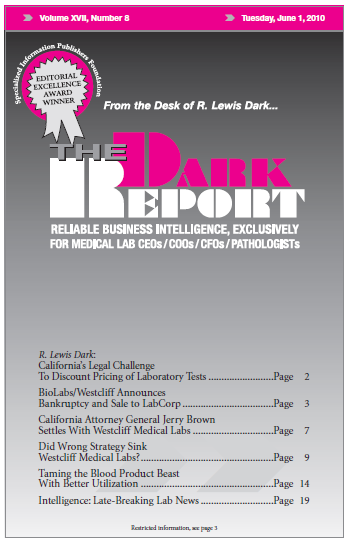CEO SUMMARY: All sorts of people will argue all sorts of opinions about the financial demise of BioLabs, Inc., and its subsidiary, Westcliff Medical Laboratories, Inc., and why it ended up in a California bankruptcy court. Documents filed in the case indicate that, from the birth of the new company in June, 2006, it never …
Did Wrong Strategy Sink Westcliff Medical Labs? Read More »
To access this post, you must purchase The Dark Report.


